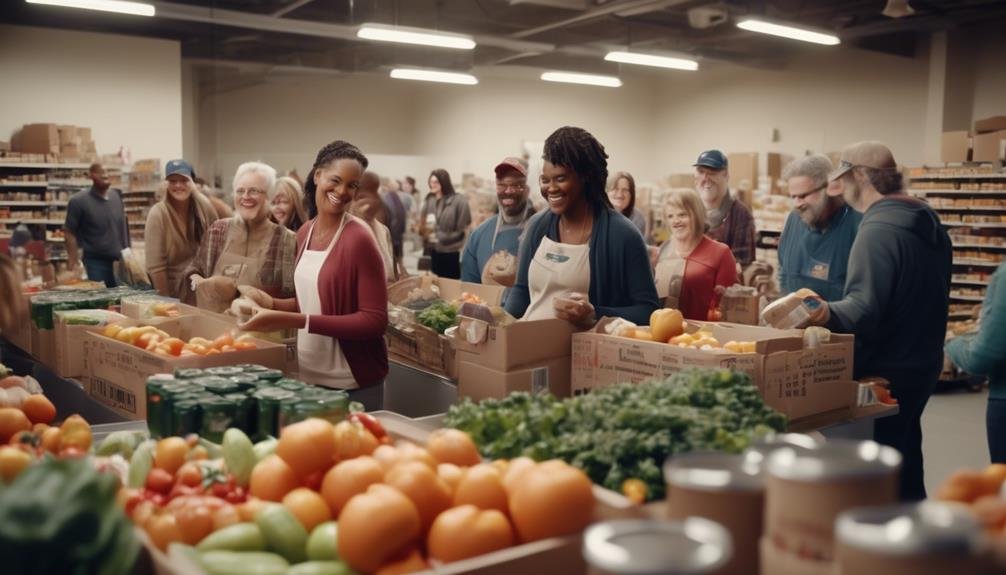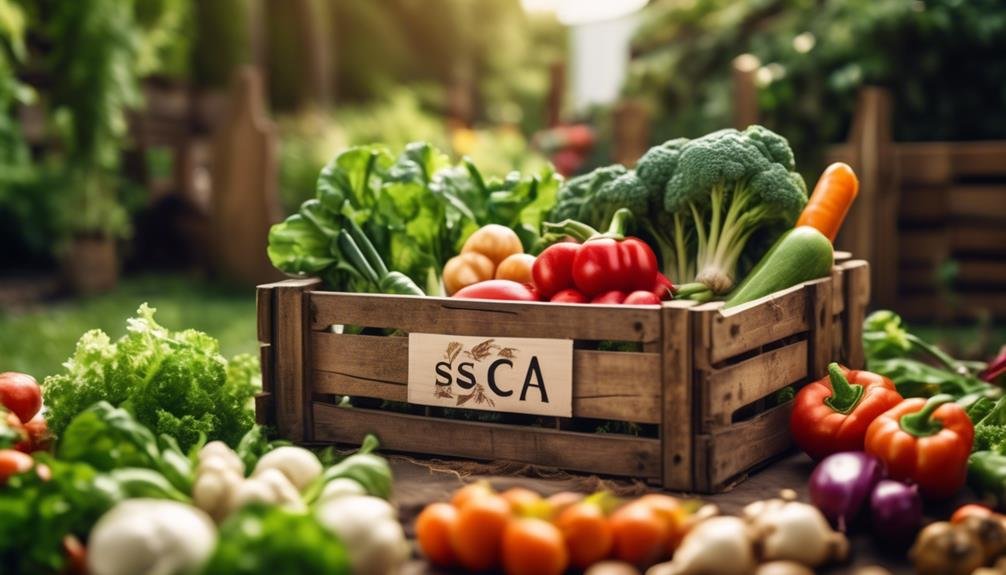"Cherishing Little Steps - A Haven for Baby and Family Journeys"
Community Resources for Nutrition
Are you tired of searching for ways to improve your nutrition? Look no further! Community resources are here to help you on your journey to a healthier lifestyle.
From local farmers markets bursting with fresh produce to community gardens where you can grow your own nutritious food, there are a multitude of options available to you.
But that's not all – food banks, nutrition education programs, and cooking classes are just a few other resources that can guide you towards making better food choices.
So, why wait? Discover the wealth of community resources for nutrition and take the first step towards a healthier you.
Key Takeaways
- Community resources such as community gardens, nutrition education programs, food recovery programs, and community kitchens provide access to fresh produce and promote community engagement.
- These resources support the local economy and promote sustainable farming practices.
- They increase community engagement and social interaction.
- They also improve food security and reduce food waste.
Local Farmers Markets

Local farmers markets offer a diverse selection of fresh, locally grown produce and other food products, making them an excellent resource for individuals and families looking to enhance their nutrition and support the local economy. By purchasing farm fresh produce from these markets, you can ensure that you're getting the highest quality fruits, vegetables, and other food items that are picked at the peak of their ripeness. This means that they retain more nutrients compared to produce that has been transported over long distances.
Not only does shopping at local farmers markets benefit your health, but it also supports sustainable agriculture. Sustainable agriculture focuses on practices that are environmentally friendly, such as minimizing pesticide use and reducing carbon emissions. Many local farmers utilize these practices to grow their produce, ensuring that you aren't only nourishing your body but also protecting the planet.
Additionally, shopping at farmers markets allows you to develop a personal connection with the farmers who grow your food. You can ask them questions about their farming methods, learn about new and unique varieties of fruits and vegetables, and even get tips on how to cook and prepare the produce. This personal interaction creates a sense of community and fosters a deeper appreciation for the hard work and dedication that goes into growing our food.
Community Gardens
To further expand your access to fresh and nutritious produce while actively participating in your community, consider exploring the benefits of engaging in community gardens. Community gardens are shared spaces where individuals come together to cultivate plants and grow food collectively. Not only do they provide a sustainable source of fresh fruits and vegetables, but they also offer numerous other advantages.
One of the key benefits of participating in a community garden is the opportunity to learn about garden maintenance and crop selection. By working alongside experienced gardeners and community members, you can gain valuable knowledge about planting, watering, and caring for various crops. This hands-on experience allows you to develop new skills and deepen your understanding of sustainable gardening practices.
Moreover, community gardens often offer a diverse range of crops to choose from. By growing your own food, you have control over the types of fruits, vegetables, and herbs you want to cultivate. This allows you to prioritize the foods that are most beneficial to your health and dietary needs. Additionally, growing a variety of crops helps promote biodiversity and supports the local ecosystem.
To give you a better understanding of the benefits of community gardens, here is a table highlighting some of the advantages you can expect:
| Benefits of Community Gardens |
|---|
| Access to fresh and nutritious produce |
| Opportunity to learn about garden maintenance |
| Ability to choose and grow specific crops |
| Promotion of biodiversity |
| Active participation in the local community |
Food Banks

Food banks play a crucial role in addressing food insecurity and providing essential support to individuals and families in need. When faced with economic challenges or unexpected emergencies, food banks can offer a lifeline to those struggling to put food on the table. Here are four reasons why food banks are an important resource for emergency assistance:
- Access to Nutritious Food: Food banks strive to provide a variety of nutritious options, including fresh produce, dairy products, and protein sources. This ensures that individuals and families have access to balanced meals despite their financial constraints.
- Community Support: Food banks often collaborate with local businesses, farms, and individuals to source and distribute food. This community-driven approach not only helps address food insecurity but also fosters a sense of togetherness and support within the community.
- Bridge to Long-term Solutions: While food banks provide immediate relief, they also connect individuals to other resources that can help address the root causes of food insecurity, such as job training programs, financial counseling, and affordable housing options.
- Dignity and Respect: Food banks understand the importance of treating individuals with dignity and respect. They create a welcoming environment where people can access food without feeling judged or stigmatized, ensuring that everyone can maintain their self-esteem during challenging times.
Food banks serve as a vital safety net for those experiencing food insecurity, offering emergency assistance and support to help individuals and families regain stability in their lives.
Nutrition Education Programs
When it comes to addressing food insecurity and promoting overall well-being, one essential resource that complements the assistance provided by food banks is the implementation of nutrition education programs. These programs play a vital role in equipping individuals and communities with the knowledge and skills necessary to make informed decisions about their diet and nutrition.
One major avenue for nutrition education programs is through school initiatives. Schools have a unique opportunity to shape the eating habits and food choices of children and adolescents. By incorporating nutrition education into the curriculum, schools can empower students to develop healthy eating habits early on and carry them into adulthood.
School initiatives can take various forms, such as incorporating nutrition education into science or health classes, offering cooking workshops, or creating school gardens. These programs not only educate students about the importance of a balanced diet, but also provide practical skills like meal planning, grocery shopping, and cooking.
Additionally, nutrition education programs can extend beyond the classroom and involve the entire community. Collaborating with local organizations and health professionals, schools can organize events, workshops, and informational sessions to engage parents, caregivers, and community members in promoting healthy eating habits.
Cooking Classes

Cooking classes offer individuals the opportunity to learn practical skills and gain confidence in preparing nutritious meals for themselves and their families. These culinary workshops provide a supportive and interactive environment where you can develop your cooking techniques and expand your knowledge of healthy meal planning.
Here are four reasons why you should consider enrolling in a cooking class:
- Hands-on experience: Cooking classes allow you to get hands-on experience in the kitchen, where you can practice various cooking techniques and learn how to prepare nutritious meals from scratch. This practical approach helps you build confidence in your cooking abilities and empowers you to make healthier choices in your everyday life.
- Expert guidance: In cooking classes, you'll have access to expert instructors who can provide valuable guidance and answer any questions you may have. They'll teach you essential cooking skills, share tips and tricks, and offer personalized advice to help you achieve your nutrition goals.
- Social interaction: Joining a cooking class provides an opportunity to connect with like-minded individuals who share a passion for cooking and healthy eating. You can exchange recipes, share experiences, and build a supportive community that encourages and motivates each other to make positive changes in their diets.
- Menu variety: Cooking classes often cover a wide range of cuisines, giving you the chance to explore different flavors and expand your culinary repertoire. By learning to cook diverse dishes, you can overcome monotony in your meals and discover new healthy recipes to incorporate into your daily life.
Enrolling in a cooking class can be a significant step towards improving your nutrition and overall well-being. So why not take the plunge and embark on this exciting culinary journey?
Mobile Food Pantries
After exploring the benefits of cooking classes, it's time to shift our focus to another valuable community resource: mobile food pantries. In food deserts, where access to fresh and nutritious food is limited, mobile food pantries play a crucial role in hunger relief efforts. These are essentially trucks or buses that are equipped with shelves and refrigerators stocked with a variety of food items. They travel to different locations within the community, making it easier for individuals and families to access healthy food options.
Mobile food pantries offer a practical solution to the problem of food deserts. They bring fresh produce, canned goods, and other essential items directly to the neighborhoods that need them the most. By eliminating the barrier of transportation, mobile food pantries ensure that everyone has equal access to nutritious food, regardless of their location or economic status.
These pantries also address the issue of hunger relief by providing immediate assistance to those in need. They often partner with local food banks, community organizations, and volunteers to distribute food to individuals and families who are struggling to put food on the table. This collaborative effort helps ensure that no one goes hungry in our communities.
If you find yourself in a food desert or facing food insecurity, reach out to your local community organizations or food banks to find out if there are mobile food pantries operating in your area. These resources can provide you with the assistance you need to meet your nutritional needs and alleviate the burden of hunger. Remember, you aren't alone in this journey, and there are resources available to help you.
Community Supported Agriculture (CSA)

Community Supported Agriculture (CSA) offers individuals and families the opportunity to directly support local farmers while gaining access to fresh and seasonal produce. By participating in a CSA program, you not only enjoy the benefits of farm fresh produce, but also contribute to the sustainability of farming practices in your community.
Here are four reasons why CSA can be a great choice for you:
- Quality and freshness: CSA members receive a weekly or bi-weekly share of produce that's picked at its peak ripeness. This means you get to enjoy fruits and vegetables that are bursting with flavor and packed with nutrients.
- Variety and seasonality: CSA shares are often filled with a diverse range of fruits, vegetables, and herbs. You'll get to experience the joys of eating with the seasons, trying new ingredients, and experimenting with different recipes.
- Sustainable farming practices: Many CSA farms prioritize sustainable farming methods such as organic or regenerative agriculture. By supporting these farms, you're promoting environmentally friendly practices that safeguard the health of the soil, water, and ecosystems.
- Community connection: CSA programs often foster a sense of community by providing opportunities for members to visit the farm, attend workshops, or participate in volunteer activities. This allows you to forge a deeper connection with the farmers who grow your food and with other CSA members who share similar values.
Healthy Food Access Initiatives
To improve access to healthy food options, various initiatives have been implemented to ensure that individuals and families have the resources they need to make nutritious choices. One of the key challenges faced by many communities is the presence of food deserts, which are areas where access to affordable, fresh, and nutritious food is limited. In response to this issue, numerous organizations and government agencies have introduced healthy food access initiatives to address the problem.
One important initiative is the Supplemental Nutrition Assistance Program (SNAP), which provides low-income individuals and families with financial assistance to purchase food. SNAP benefits can be used to buy a wide range of nutritious foods, including fruits, vegetables, whole grains, lean meats, and dairy products. This program not only helps individuals afford healthier options but also supports local economies by increasing the demand for fresh and nutritious food.
Additionally, many communities have implemented programs to bring grocery stores and farmers' markets to food deserts. These initiatives aim to increase access to affordable, fresh produce and other healthy food options. By partnering with local farmers and suppliers, these programs ensure that residents have access to high-quality, locally sourced food.
Frequently Asked Questions
Are There Any Financial Assistance Programs Available to Help Individuals and Families Afford Fresh and Healthy Food From Local Farmers Markets?
Yes, there are financial assistance programs available to help you and your family afford fresh and healthy food from local farmers markets. Supporting local community gardens also has many benefits.
How Can Community Members Get Involved in Supporting and Volunteering at Local Community Gardens?
You can make a difference by volunteering at local community gardens. Not only will you contribute to a greener space, but you'll also enjoy the benefits of fresh produce and a sense of belonging.
What Types of Foods Are Typically Available at Food Banks, and Are There Any Restrictions on Who Can Access These Resources?
At food banks, a variety of foods are typically available, including fresh produce, canned goods, and grains. While eligibility requirements may vary, food banks aim to provide resources to those in need, regardless of income or background.
Are There Any Nutrition Education Programs Specifically Tailored for Different Age Groups, Such as Children, Teenagers, or Older Adults?
Looking to improve your nutrition knowledge? There are nutrition education programs tailored for different age groups, including children, teenagers, and older adults. These programs provide valuable resources to help you make informed choices.
Can You Provide Information on Any Specialized Cooking Classes That Focus on Dietary Restrictions or Specific Health Conditions, Such as Diabetes or Heart Disease?
You can find specialized cooking classes that focus on dietary restrictions or specific health conditions, such as diabetes or heart disease. There may also be financial assistance available to help with the affordability of fresh food.
Conclusion
In conclusion, community resources for nutrition provide a plethora of practical and accessible options to improve your health.
From local Farmers Markets and Community Gardens to Nutrition Education Programs and Cooking Classes, there are numerous opportunities to learn about and access healthy food options.
Additionally, initiatives like Mobile Food Pantries and Community Supported Agriculture (CSA) ensure that nutritious food is available to all.
Take advantage of these resources to nourish your body and lead a healthier lifestyle.


